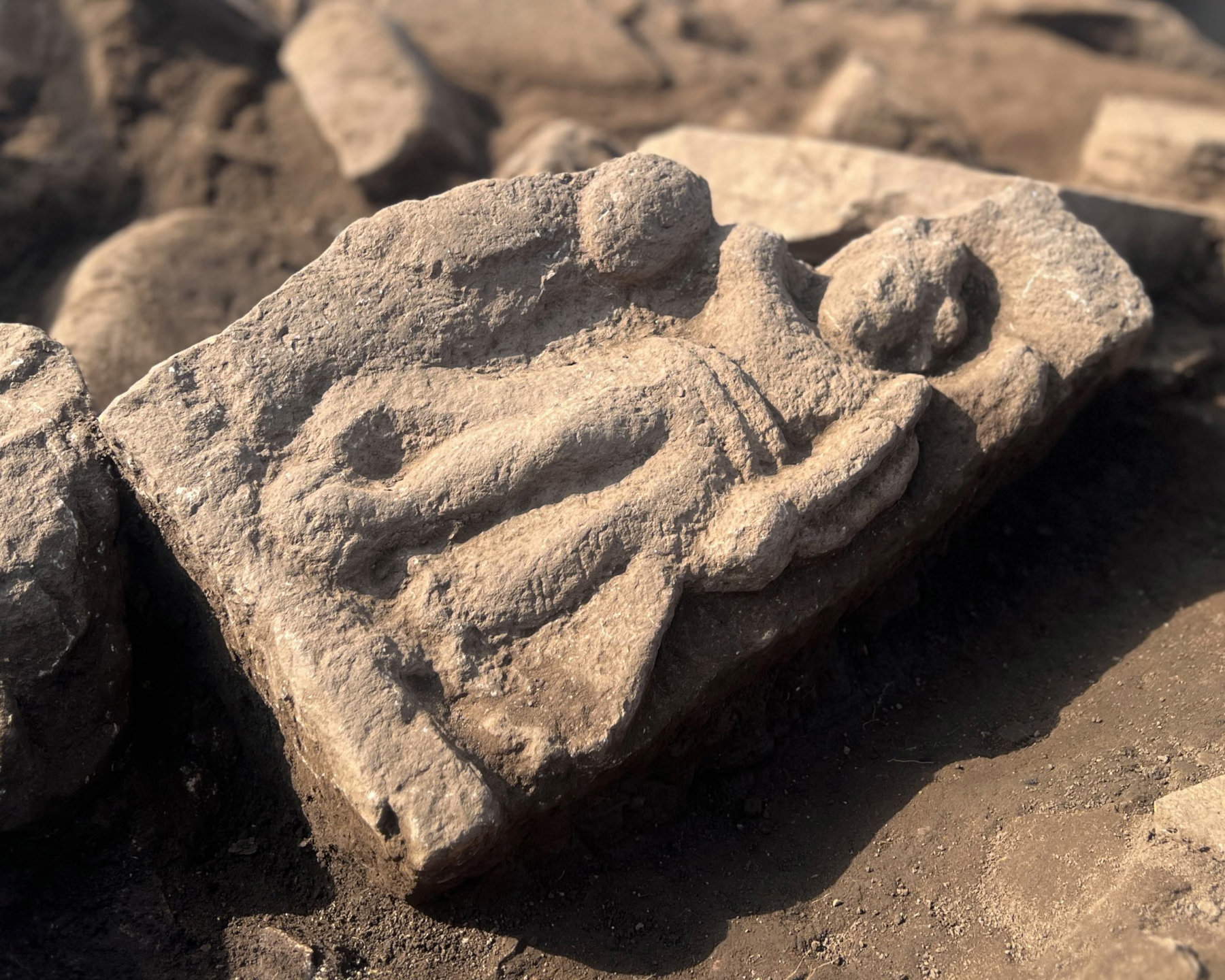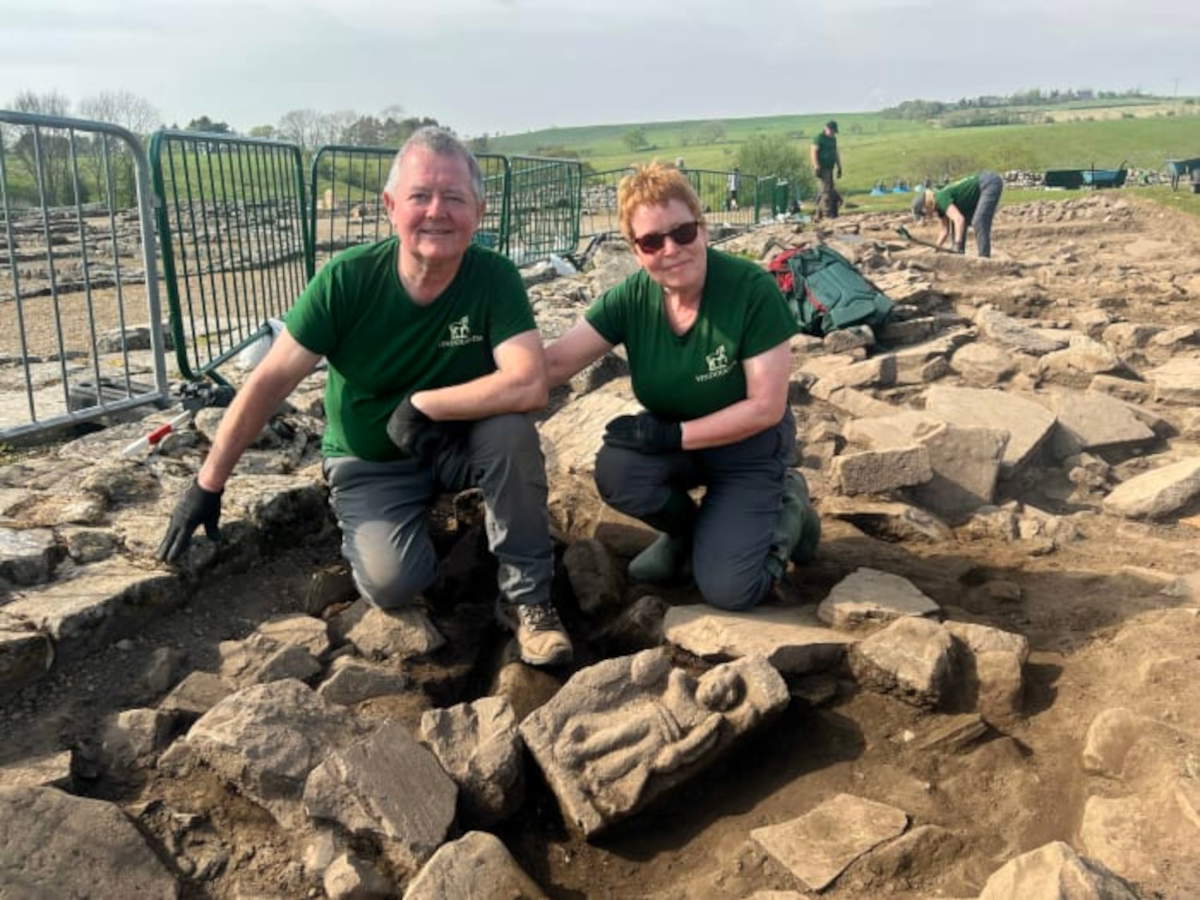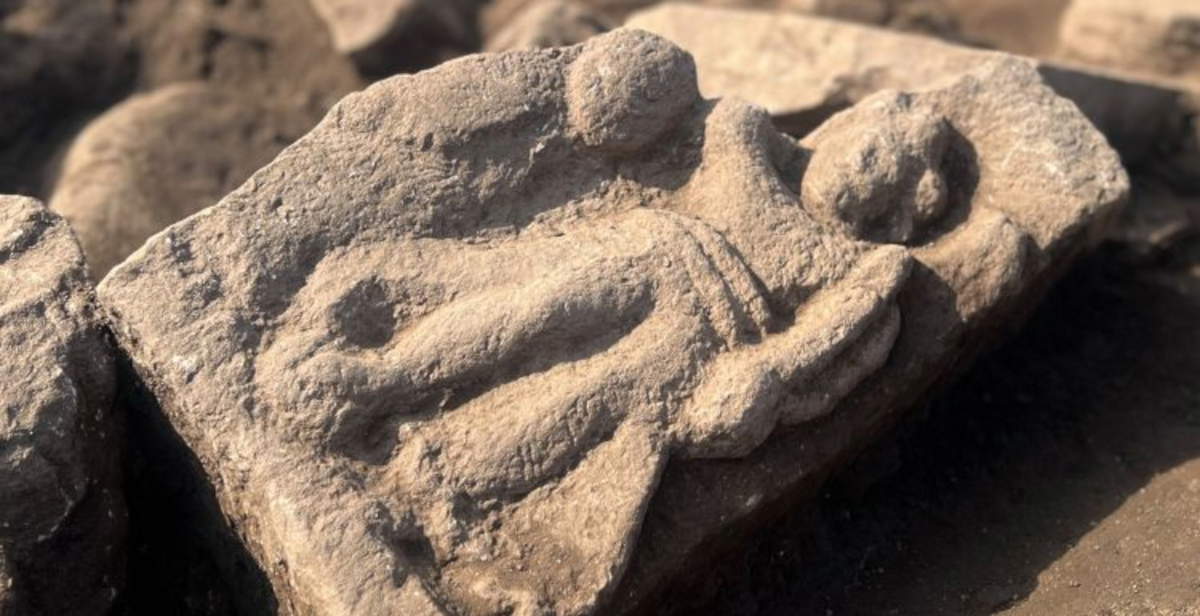A new discovery in northern England brings back a fragment of the Roman presence in Britain. At the archaeological site of Vindolanda, one of the best-known forts located along Hadrian’s Wall, a sandstone relief depicting the Roman goddess Victoria, a deity associated with military triumph, has been found. The find occurred above the infantry barracks, in a pile of debris and rubble, in an area already known for its historical significance.
What is curious is that the relief, interpreted as a representation of Victoria, the personification of victory in the Roman religion, was discovered by the two amateur archaeologists, two volunteers who were helping professionals in the excavation campaign-Jim and Dilys Quinlan, a husband and wife originally from Merseyside, engaged in their 21st season of excavation at Vindolanda. On May 1, 2025, while working with the Vindolanda Trust team of archaeologists, they spotted the carved stone, which they speculated was a side part of a larger work. Dilys Quinlan, 69, is a health care worker, while her husband Jim, 68, is an engineer working for Liverpool City Council.
Dilys told the Guardian, “We have spent most of our vacations at Vindolanda over the years. As veteran diggers, it’s without a doubt the most wonderful thing we’ve ever done and, most importantly, it’s something we do as a couple. It is the best form of relaxation we know. We eat well, sleep well, have good company and there is always something to learn. What more can you ask for?”

“Finds like this,” said Andrew Birley, Director of Excavations at The Vindolanda Trust, “are increasingly rare these days in Roman Britain, but the beautifully carved figure vividly reminds us that Roman forts were not simply functional, but had grandeur and, of course, symbolism was a vital part of the local culture for soldiers nearly 2,000 years ago. I am also happy for Jim and Dilys for their discovery. It is a fitting reward for their 21 years of hard work and dedication to this site.”
“It is very likely that this stone was originally painted in bright colors,” noted Trust curator Barbara Birley. “We will work with our specialists to see if any traces of the pigment remain, so for now the relief is being stored unwashed, ready for further analysis.”

At the center of the composition must have been an inscription, now lost. The figure of Victoria, the Roman equivalent of the Greek Nike, had a fundamental function in the military symbolism of the Empire. In imperial times she was often evoked as a source of inspiration and legitimacy for victories on the battlefields. It was common for her images to be placed in places of military significance, such as triumphal arches, monumental gates or ceremonial spaces, and to be accompanied by celebratory inscriptions. In the case of Vindolanda, the location of the stone suggests that the relief was placed near the monumental entrance to the barracks, built shortly after 213 CE, at the end of the Severan Wars. The wars, waged during the reign of Emperor Septimius Severus, represented a crucial phase in the history of Roman Britain. The construction of barracks at Vindolanda marked a phase of consolidation following the conflict. The relief of the goddess Victory, placed at a crossing point such as a decorative arch over the military entrance, thus takes on an emblematic meaning: the celebration of victory, but also a symbol of peace achieved and military stability re-established at the northern border of the Empire. The Vindolanda site, now managed by the Vindolanda Trust, is known for its extraordinary wealth of artifacts, including wooden tablets with inscriptions, footwear, objects of daily use and well-preserved military structures. The discovery of the relief adds to a long line of finds that have helped rewrite the history of the Roman presence in Britain, providing a more detailed narrative of military and civilian life along the northern limes.
The formal identification of the carved figure was entrusted to Professor Rob Collins, professor of Frontier Archaeology and head of the Department of Archaeology at Newcastle University. Academic involvement in validating the work underscores the importance of the artifact as a historical document. According to reports, the relief will be on public display starting in early 2026 within the Vindolanda Museum as part of the Recent Finds exhibition, which will bring together the most relevant discoveries from the latest excavation campaigns. As has been the case in the past, the site continues to provide essential data for understanding the military, political, and religious dynamics of the Roman Empire in a border area where the imperial presence was constantly tested by local rebellion and instability. The sandstone used for the relief is consistent with that used for other decorations at the site, suggesting production locally or otherwise within the regional resources of northern England. Preservation of the carved surface is surprisingly good, despite the context of discovery among reused materials. The stone, fragmentary but legible, features a winged female figure, according to typical Victoria iconography, characterized by fluttering robes and dynamic posture, symbolizing the triumph in progress.
Beyond its artistic value, the importance of the find lies above all in the message it conveyed to those who crossed the threshold of the barracks: the affirmation of Roman strength and the beginning of a new, pacified phase of military life. At a time when the Empire was seeking to strengthen its northern frontiers, these images also served as tools of propaganda and collective identity.
 |
| England, a pair of amateur archaeologists discover an important Roman relief |
Warning: the translation into English of the original Italian article was created using automatic tools. We undertake to review all articles, but we do not guarantee the total absence of inaccuracies in the translation due to the program. You can find the original by clicking on the ITA button. If you find any mistake,please contact us.